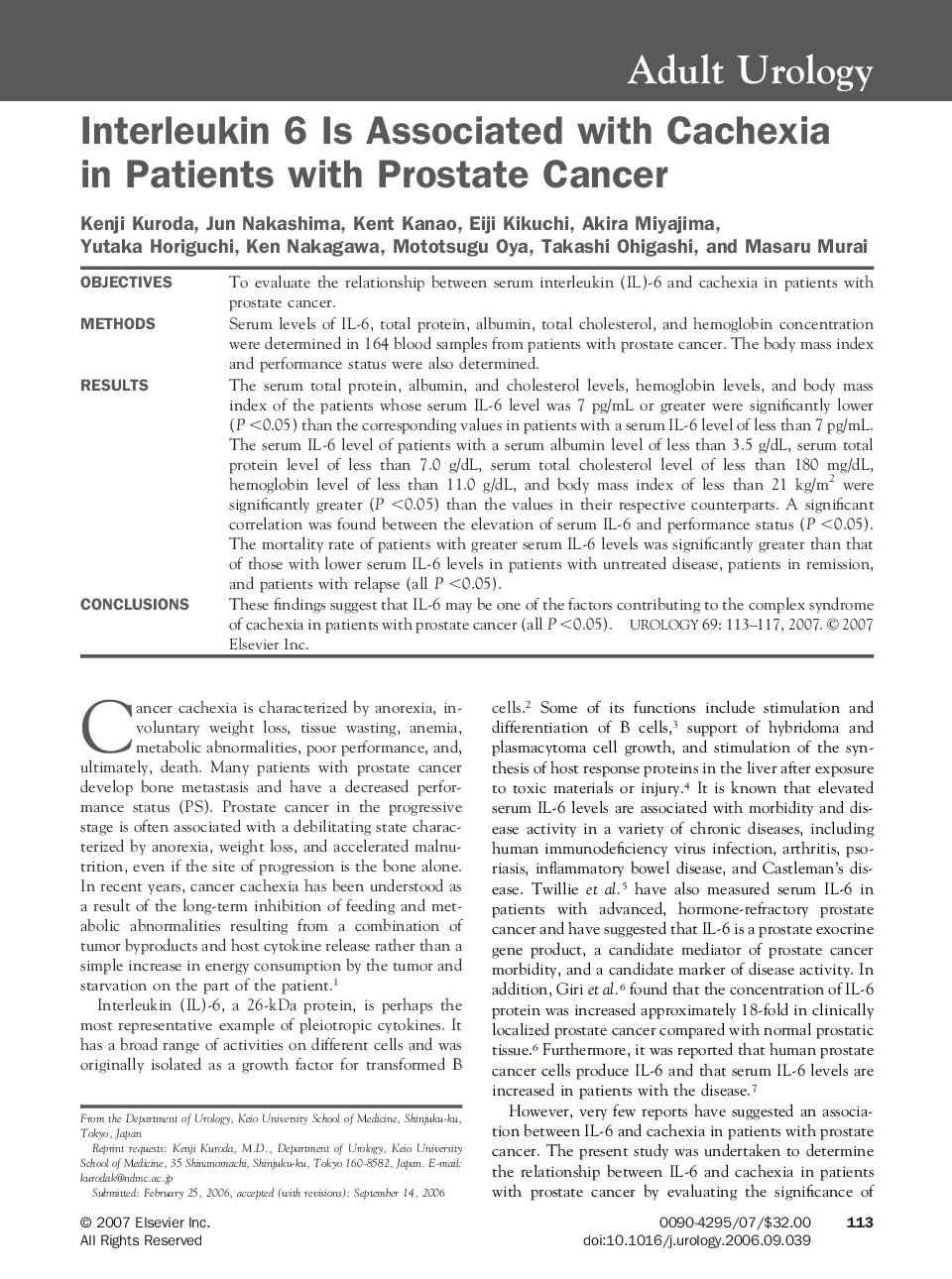| Article ID | Journal | Published Year | Pages | File Type |
|---|---|---|---|---|
| 3905159 | Urology | 2007 | 5 Pages |
ObjectivesTo evaluate the relationship between serum interleukin (IL)-6 and cachexia in patients with prostate cancer.MethodsSerum levels of IL-6, total protein, albumin, total cholesterol, and hemoglobin concentration were determined in 164 blood samples from patients with prostate cancer. The body mass index and performance status were also determined.ResultsThe serum total protein, albumin, and cholesterol levels, hemoglobin levels, and body mass index of the patients whose serum IL-6 level was 7 pg/mL or greater were significantly lower (P <0.05) than the corresponding values in patients with a serum IL-6 level of less than 7 pg/mL. The serum IL-6 level of patients with a serum albumin level of less than 3.5 g/dL, serum total protein level of less than 7.0 g/dL, serum total cholesterol level of less than 180 mg/dL, hemoglobin level of less than 11.0 g/dL, and body mass index of less than 21 kg/m2 were significantly greater (P <0.05) than the values in their respective counterparts. A significant correlation was found between the elevation of serum IL-6 and performance status (P <0.05). The mortality rate of patients with greater serum IL-6 levels was significantly greater than that of those with lower serum IL-6 levels in patients with untreated disease, patients in remission, and patients with relapse (all P <0.05).ConclusionsThese findings suggest that IL-6 may be one of the factors contributing to the complex syndrome of cachexia in patients with prostate cancer (all P <0.05).
